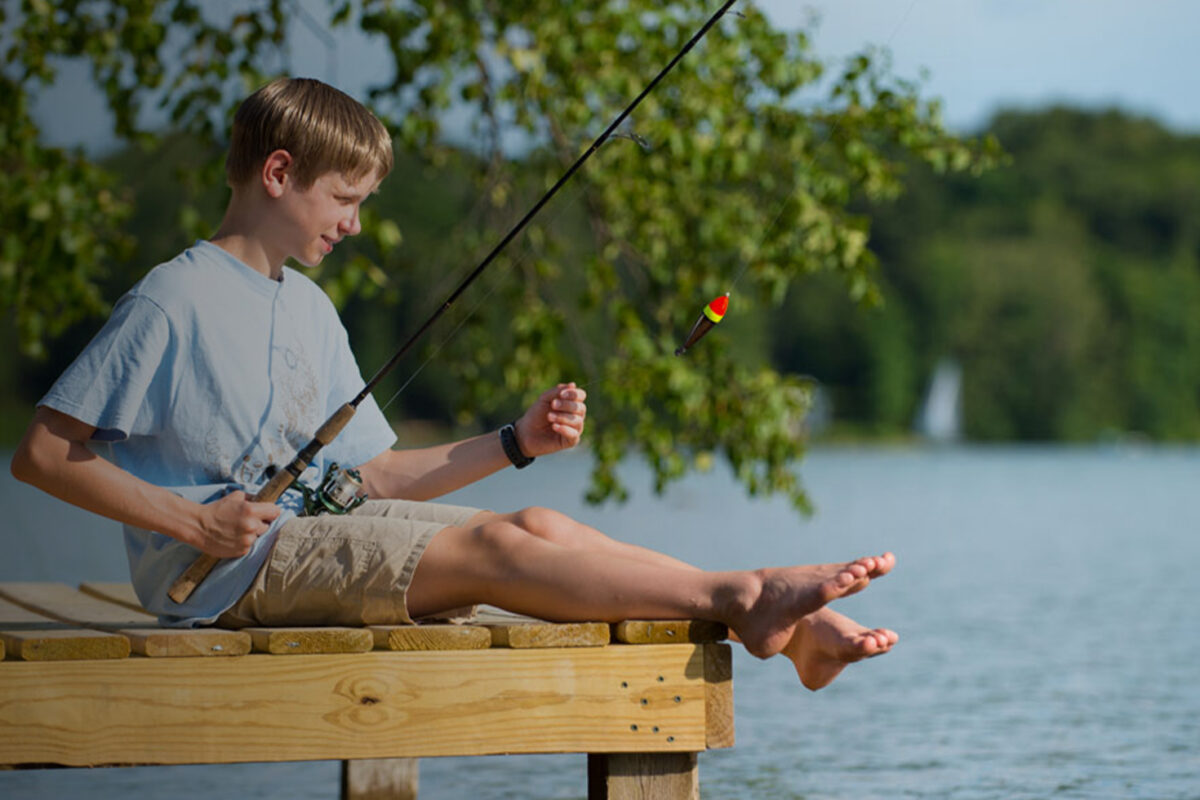Fishing at Sugar Lake Lodge is a pastime that many of our guests have enjoyed for years. With two lakes—Sugar Lake and the smaller Little Sugar—and plenty of species of fish, there’s a lot for budding fishing enthusiasts and veterans to love. What kinds of fish can you catch here? Meet some of our local fish species.
Walleye (Sander vitreus)
The state fish of Minnesota? Of course you’ll find it in Sugar Lake! Walleye get their name from their overly large, opaque, and cloudy looking eyes. These allow them to see their prey in the murky waters of the lake at night. The best Walleye fishing time is in the early summer, and they tend to hang out in depths between 20 and 60 feet because of their sensitivity to light.
Fun fact: Walleye have thousands of taste buds located on their lips!
Northern Pike (Esox lucius)
Northern Pike are easily identifiable by their greenish elongated bodies and their duck-billed shaped snout that is filled with small, sharp teeth. Northern Pikes can be large, sometimes growing over four feet in length. They are fast, able to swim up to 10 mph, and prefer to stay in water that is 6-12 ft deep. In the summer, they may go past 15 ft to cooler waters.
Fun fact: a Northern Pike will eat almost anything it can fit in its mouth! This includes ducks, mice, rats, frogs, snakes, crayfish, and nearly all fishes, including other pikes.
Largemouth Bass (Micropterus salmoides)
Largemouth bass are a type of black bass that is part of the sunfish family. They are one of the most widely distributed and fished species in the country, being found in 48 states nationwide (including being the state fish of Alabama, Georgia, Mississippi and Florida). They tend to stay in shallow water (between 9 to 12 feet), only migrating deeper in the winter months.
Fun fact: bass have an inner ear bone that helps them detect sounds and the movement of crawfish.
Crappie (Pomoxis nigromaculatus)
Pronounced kraa·pee, Crappie are smaller fish that belong to the sunfish family. They are also sometimes called panfish because they are small enough to fit into a frying pan. They like to feed in schools in shallow waters during the early morning hours, so get yourself out of bed and hit the lake early if you want to get these fish biting.
Fun fact: the crappie’s eye size is the largest among similar-sized freshwater fish.
Bluegill (Lepomis macrochirus)
Bluegill get their name from their distinctive deep blue and purple coloring on their faces and gills. These types of sunfish like to hide in plants, weeds, tree stumps, and any other aquatic structures. They tend to feed in the late afternoon just before sunset. These easy-to-catch fish are great for kids and beginners!
Fun fact: the bluegill is a common host fish for freshwater mussels, so you might get a bonus when fishing one up!
Yellow Perch (Perca flavescens)
Yellow Perch are known for their yellowish sides and white underside. They are a close relative to Walleye as they share many features and physical characteristics. Yellow Perch like to spawn in shallow waters, generally less than 15 feet, and can be found in abundance starting in late April and early May.
Fun fact: Yellow Perch lay their eggs in long, connected ribbons, and a single female lay over 20,000 eggs!
Plan Your Fishing Trip at Sugar Lake Lodge
Whether you prefer to fish solo, with friends, or in large groups, there are plenty of ways to fish at Sugar Lake Lodge! You can always fish off the shore or on one of our numerous mini docks, and we also offer many boat rentals that include:
- Canoes
- Kayaks
- A 14’ Hobie cat sailboat
- Pontoons
- Motorized fishing boats
The Grand Rapids area also has some incredible fishing guides and guided fishing trips. There’s a lot of freshwater lakes in the Minnesota Northwoods, so don’t miss the opportunity to cast and line on your next trip!

